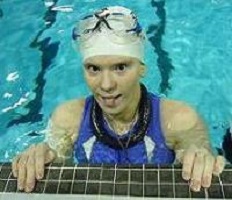
Freediving Competition, what is it all about…
While freediving is an exercise in relaxation, it’s easy to psyche yourself out on the competition front. There’s rules you have to consider; you might have a case of the jitters that day; you could stumble upon some other inexplicable personal wall. What’s crucial is that you stay relaxed in spite of those things!
It’s important to remember that you are freediving for yourself and yourself only and competition is a great place to test yourself and your limits, surrounded by an encouraging and supportive community. When you put your airways below the surface and start your dive, you set out to do your best to come up clean in the end. There have been times when I’ve gone way beyond what I had done in training and come up triumphant and there have been times when I played it safe.
There have been times when I didn’t listen to myself and pushed too hard.
You do your best and, whatever happens, you should use that as a learning experience. You might surprise yourself in the best way possible.
And so, for those of you that are participating in a freediving competition for the first time, here are a few pointers for The Day from someone that’s been ‘round the competition block a few times…
RELAX – first and foremost! Take a deep breath (from your belly up) and let it out, slowly. Do it now, even.
Hours before the competition
Don’t eat anything for at least 2 hours before your dive time, but remember to stay hydrated.
I wouldn’t advise doing cardio of High Intensity Interval Training a few days before the comp, but yoga is highly recommended! Be careful not to strain yourself, though.
Figure out your warm-up and equipment set-up routines even before you get to the pool. In freediving competition, you must be in sight of the judges an hour before your dive, so use that time to lay out your equipment and warm up on deck. An excellent way to do this, is to write everything down in the order that you’re to do them – write it down to the minute, but PLEASE REMEMBER to give yourself extra time for anything incidental.
Make a plan
Making a list/timesheet is a great way to make sure you don’t forget anything you intended to do – or any equipment you might need.
You’ll thank yourself later, trust me!
For your wetsuit, I would recommend NOT putting it on too early, as you’ll likely overheat, but it’s important to give yourself enough time to tug it on with plenty of time given to relaxing afterwards. Putting on a wetsuit is a workout in and of itself and you need time to ‘cool down’.
Everybody’s warm up routine is different, so I won’t preach what’s best, but here’s an example based on what I do: I’ll start with light stretches to loosen up, and follow up with low-to-medium-intensity yoga. Then I will quite literally lie down on my yoga mat, shut my eyes and will my body to relax from the toes up. Talk yourself through each body-part – it helps.
Stay relaxed and loose for at least 20 minutes before your dive.
If music is something that helps you de-stress, plug those ears (but pay attention to your time). I would recommend the soothing sound of waves
I make sure I am ready to be in the water – suit, facial equipment, fins (if you’re doing that) – about 5 minutes before my dive. That gives me enough time to remember anything I might have forgotten.
In the end, competition is a great way to learn something about yourself and find room for improvement. They’re also a lot of fun.
Remember to breathe – at least up until your dive time!
Written By Yaroslava Timoshenko






